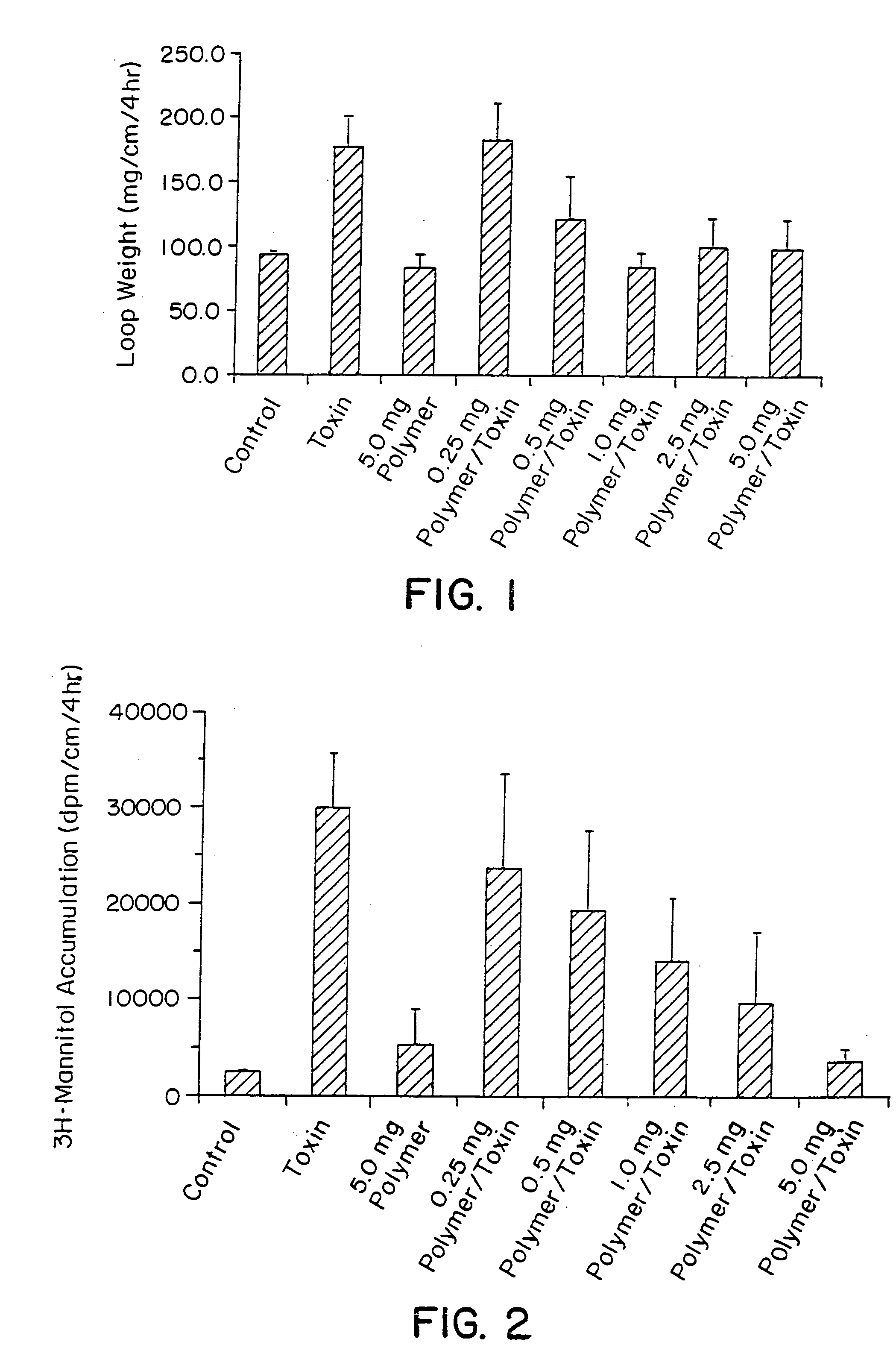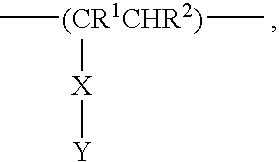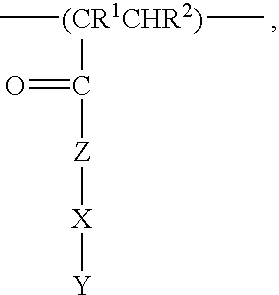Anionic polymers as toxin binders and antibacterial agents
a technology of toxin binders and anionic polymers, applied in the direction of antibacterial agents, synthetic polymeric active ingredients, drug compositions, etc., can solve the problems of limited effectiveness of antitoxins, damage in regions, harmful to host organisms, etc., to prevent recurrence and relapse of disease, prevent relapse, and facilitate preparation
- Summary
- Abstract
- Description
- Claims
- Application Information
AI Technical Summary
Benefits of technology
Problems solved by technology
Method used
Image
Examples
example 1
Synthesis of Acrylic Acid / Styrene Copolymer (2:1)
[0081] A solution was prepared of acrylic acid (15.0 g, 0.2 mol) and styrene (10.4 g, 0.1 mol) in THF (200 mL). After the solution was degassed with a rapid stream of nitrogen, azobisisobutyronitrile (AIBN) (1.47 g, 3 mol % with respect to total monomer) was added. The solution was degassed for a further thirty minutes and the reaction was then heated to 70° C. for 14 h. The solution was cooled and precipitated into n-hexane (800 mL). The hexane was decanted from the fibrous white product, the product was washed with ethyl acetate (300 mL) followed by washing with a further aliquot of hexane (200 mL). The polymer was dried in vacuo to yield 21.6 g, 84.6% of a brittle white solid.
example 2
Synthesis of Acrylic Acid / Decylacrylate (96:4) Copolymer
[0082] A solution was prepared of acrylic acid (10.0 g, 133 mmol) and n-decylacrylate (1.0 g, 4.71 mmol) in dioxane (200 mL). The solution was degassed by passing a rapid stream of nitrogen through it, and to the solution was added AIBN (0.6 g, 5 mol % with respect to total monomer). The solution was degassed for a further thirty minutes and the reaction was then heated to 70° C. for 16 hr. The solution was cooled and precipitated into ethyl acetate (600 mL). The ethyl acetate was decanted from the fibrous white product, the product was washed with ethyl acetate (300 mL) and then with hexane (200 mL). The polymer was dried in vacuo to yield 9.0 g, 81% of a brittle white solid.
example 3
Synthesis of Acrylic Acid / N-Butylacrylate (9:1) Copolymer
[0083] A solution was prepared of acrylic acid (10.0 g, 133 mmol) and n-butylacrylate (2.0 g, 14.41 mmol) in dioxane (200 mL). The solution was degassed by passing a rapid stream of nitrogen through it, and to the solution was added AIBN (0.6 g, 5 mol % with respect to total monomer). The solution was degassed for a further thirty minutes and the reaction was then heated to 70° C. for 17 h. The solution was cooled and precipitated into ethyl acetate (600 mL). The ethyl acetate was decanted from the fibrous white product, the product was washed with ethyl acetate (300 mL) followed by washing with hexane (200 mL). The polymer was dried in vacuo to yield 9.0 g (81%) of a brittle white solid.
[0084] The corresponding copolymer of acrylic acid and n-butylacrylate (10:3) was made by the same procedure.
PUM
| Property | Measurement | Unit |
|---|---|---|
| temperature | aaaaa | aaaaa |
| conductivity | aaaaa | aaaaa |
| temperature | aaaaa | aaaaa |
Abstract
Description
Claims
Application Information
 Login to View More
Login to View More - R&D
- Intellectual Property
- Life Sciences
- Materials
- Tech Scout
- Unparalleled Data Quality
- Higher Quality Content
- 60% Fewer Hallucinations
Browse by: Latest US Patents, China's latest patents, Technical Efficacy Thesaurus, Application Domain, Technology Topic, Popular Technical Reports.
© 2025 PatSnap. All rights reserved.Legal|Privacy policy|Modern Slavery Act Transparency Statement|Sitemap|About US| Contact US: help@patsnap.com



